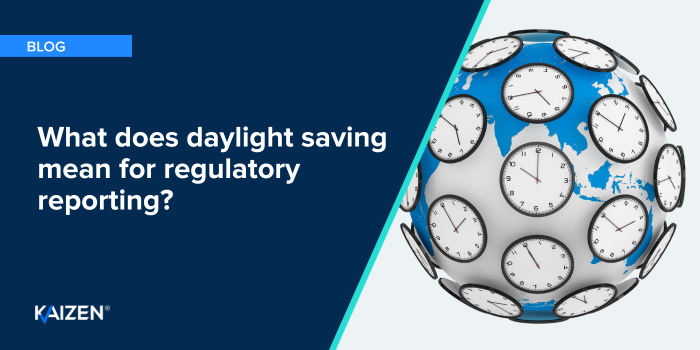10 things we learned at the FCA’s MiFID II conference

Like many of our clients MiFID II is uppermost of our minds at the moment. And on Monday we were discussing all things MiFID II at the FCA’s MiFID II Wholesale Firms Conference in London. Likely to be the first of many conferences about the new regulation, this was probably the earliest event possible given the regulatory technical standards (RTSs) were only released on 28 September.
Our advice to firms? Don’t delay: Get your heads around the new rules and get into the detail quickly.
Here are our key take aways from the conference:
Regulatory Process
1. The UK is now working towards transposing the MiFID text into UK law and this must be completed by 3 July 2016 while the European Commission now has three months to consider the published regulatory and technical standards. The FCA’s view is that it is unlikely that the Commission will impose any changes and this position will be affirmed by Q1 2016. The FCA will publish further consultation papers and these are likely to be split with a consultation paper in December 2015 and an additional one in early 2016.
2. Regarding the timeline, the FCA acknowledged this is challenging for the industry and regulators alike. However delays to MiFID II are only possible if the Commission considers this is appropriate and it is not within the college of regulators’ powers to impose. That said, we do think there will be a request for either a partial or full delay given the truncated timetable for what will be a lengthy legislative process.
3. Organisations not currently within the scope of MiFID I may potentially fall into MiFID II particularly around the commodities space. These firms will need to quickly plan how they will manage this authorisation process and should submit applications to the FCA by 3 July 2016. Applications submitted post 3 July will be processed by the FCA on a best efforts basis but there will be no guarantee that applications will be completed before MiFID II goes live in January 2017. Something that could be very detrimental to business. A similar story applies to firms that will have to apply for trading venue status OTF or MTF, high frequency trading firms, or as a systematic internaliser. All activity within firms will need to be assessed to confirm whether authorisation will be required and many platforms are expected to be captured such as broker crossing mechanisms which will come under the new OTF regime.
Transparency
4. Following a review by ESMA, the FCA confirmed that agreement had been reached on the approach to be adopted towards the calculation of liquidity and the transparency obligations that would therefore be imposed in respect of non-equity securities.
5. ESMA, following extensive consultation with industry participants and having reviewed considerable datasets, proposes the liquidity calculation will be applied on an Instrument by Instrument Approach (IBIA). The FCA believes this will mean real-time transparency reporting obligations for 4% of bonds with a significant portion of these being from sovereign debt.
6. With regards to deferred publication regime, delays will be possible between two days and up to four weeks from the point of execution. Venues will also be able to apply for pre-trade transparency ‘waivers’ where the execution is above standard market size. The FCA asked that venues apply for such waivers as soon as possible given that approval is required ahead of trading activity if reliance is to be placed upon any such waivers.
Commodities
7. Position limits will be imposed in the commodities sector. The limits will have a cap of between 5-35% of the deliverable supply. Such limits also extend to firms’ open interest positions which imply a potential delivery at such a level. Similarly, the FCA also confirmed that thresholds will be applied to speculative trading in such instruments, and firms exceeding the threshold would require authorisation under MiFID II.
8. Position limits represent significant challenges for groups with multiple entities trading commodities as the limits are applied both across the group and to each entity so one entity in the group could be within the limits, while across the group the combined total exceeds the position limits. This type of calculation is also to be applied when evaluating whether a firm’s commodity trading activity is ancillary to its main activities or not. Such calculations look at both the individual entity’s positions and the net positions across a consolidated group.
9. Position reporting by venues is also a requirement under the new regulations. The FCA is fully aware of the challenges that the requirements place, not least the need to identify clients down to the ‘end client’.
10. In transaction reporting, the RTSs are pretty clear but one area we sought clarity on was the new complex trade ID field. This field seeks to link trades that are part of a wider trading strategy. Ana Fernandes from the Transaction Monitoring Unit gave a very clear exposition of the aims and drivers behind RTS 22 and confirmed that the aim was to capture true strategies and the intention was not to cover hedging activity or even matched principal activity (riskless principal). However Article 12 wording still points to these transactions being captured. It is also worth noting that in the RTS ISINs are the only identifier for trading venue instruments. We expect that was a shock for the likes of Eurex and ICE as the consultation proposal was for Aii codes as well as ISINs.
What we liked: In the last session, a panel of regulators including ESMA, BaFin and AMF were quizzed by Nick Bailey of the FCA. We saw this as very positive in that it shows the regulators are talking to each other; indeed they said that such collusion would be in breach of the competition laws were they operating as firms.
Once the regulators have had more time to digest the detail of the 900+ pages of RTSs we hope to see more of these events with greater detail and elaboration of the implications for firms and their trading activities.
In addition to our testing services, we are offering training courses for firms on the reporting elements of MiFID II. If you are interested please contact us.


